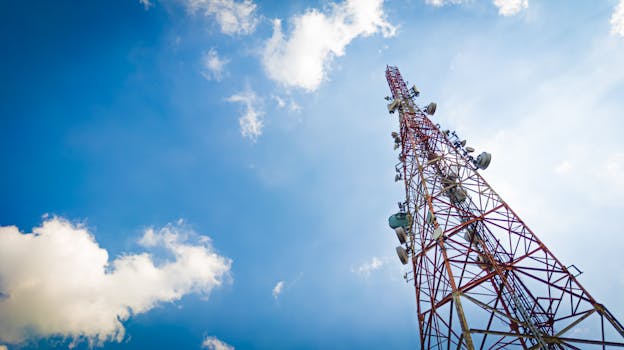LEO Satellites: Revolutionizing Global Connectivity with WordPress

LEO Satellites: The Future of Global Connectivity
LEO satellites, or Low Earth Orbit satellites, are a type of satellite that orbits the Earth at an altitude of around 160 to 2,000 kilometers. These satellites have been gaining popularity in recent years due to their ability to provide high-speed, low-latency internet connectivity to remote and underserved areas. With the help of WordPress, LEO satellites are revolutionizing the way we communicate and access information.
One of the main advantages of LEO satellites is their ability to provide internet connectivity to areas where traditional fiber optic cables and cellular networks are not available. This is particularly important for rural and remote communities, where access to information and communication services is limited. LEO satellites can also provide backup connectivity during natural disasters and outages, ensuring that critical communication services remain available.
How LEO Satellites Work
LEO satellites work by transmitting and receiving data to and from Earth-based stations. The satellites are equipped with transponders, which receive signals from Earth-based stations and re-transmit them back to other parts of the globe. This allows for high-speed data transfer and communication between different locations. LEO satellites are also equipped with antennas, which are used to transmit and receive signals to and from Earth-based stations.
The use of LEO satellites is supported by WordPress, which provides a platform for developers to build and manage satellite-based applications. WordPress plugins, such as those developed by companies like SatellitePress, provide a range of tools and features for building and managing satellite-based applications, including satellite imaging, remote sensing, and communication services.
Applications of LEO Satellites
LEO satellites have a wide range of applications, including internet connectivity, remote sensing, and navigation. They are also used for disaster response and recovery, providing critical communication services during natural disasters and outages. In addition, LEO satellites are used for environmental monitoring, providing data on climate change, deforestation, and ocean health.
The use of LEO satellites is also supported by various organizations, including the International Telecommunication Union (ITU), which provides guidelines and regulations for the use of satellite technology. The ITU also provides training and capacity-building programs for developers and operators of satellite-based applications.
Challenges and Limitations of LEO Satellites
While LEO satellites have many advantages, they also have some challenges and limitations. One of the main challenges is the high cost of launching and maintaining LEO satellites. The launch cost of a single LEO satellite can range from $50 million to $500 million, depending on the size and complexity of the satellite. Additionally, the maintenance cost of LEO satellites can be high, requiring regular software updates and hardware replacements.
Another challenge is the limited lifespan of LEO satellites, which typically ranges from 5 to 10 years. After this period, the satellites must be replaced or refurbished, which can be a costly and time-consuming process. Furthermore, LEO satellites are also vulnerable to space debris, which can cause damage or destruction of the satellites.
Conclusion
In conclusion, LEO satellites are transforming the way we communicate and access information, and WordPress is playing a key role in this revolution. With the help of WordPress, developers can build and manage satellite-based applications, providing high-speed, low-latency internet connectivity to remote and underserved areas. While there are challenges and limitations to the use of LEO satellites, the benefits of this technology are undeniable, and it is likely to play an increasingly important role in the future of global connectivity.


